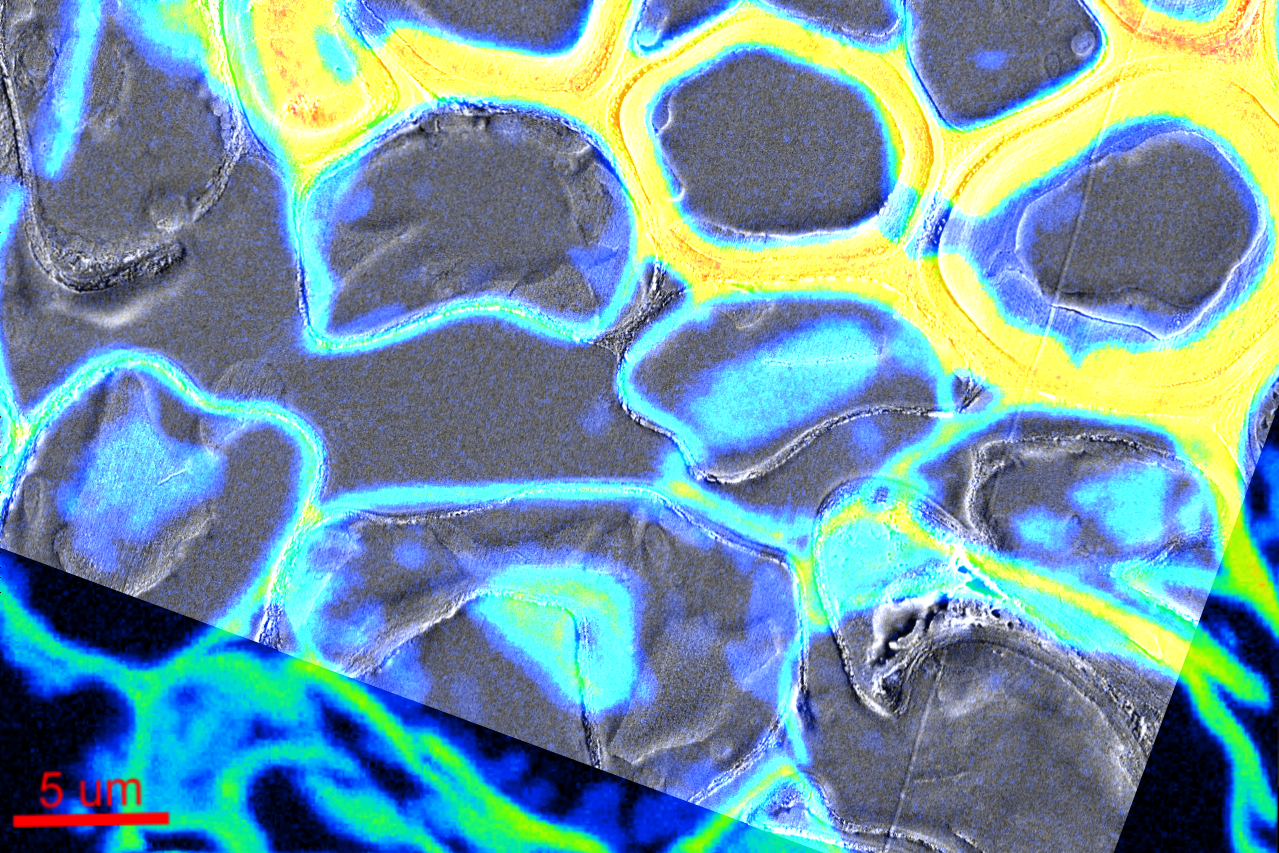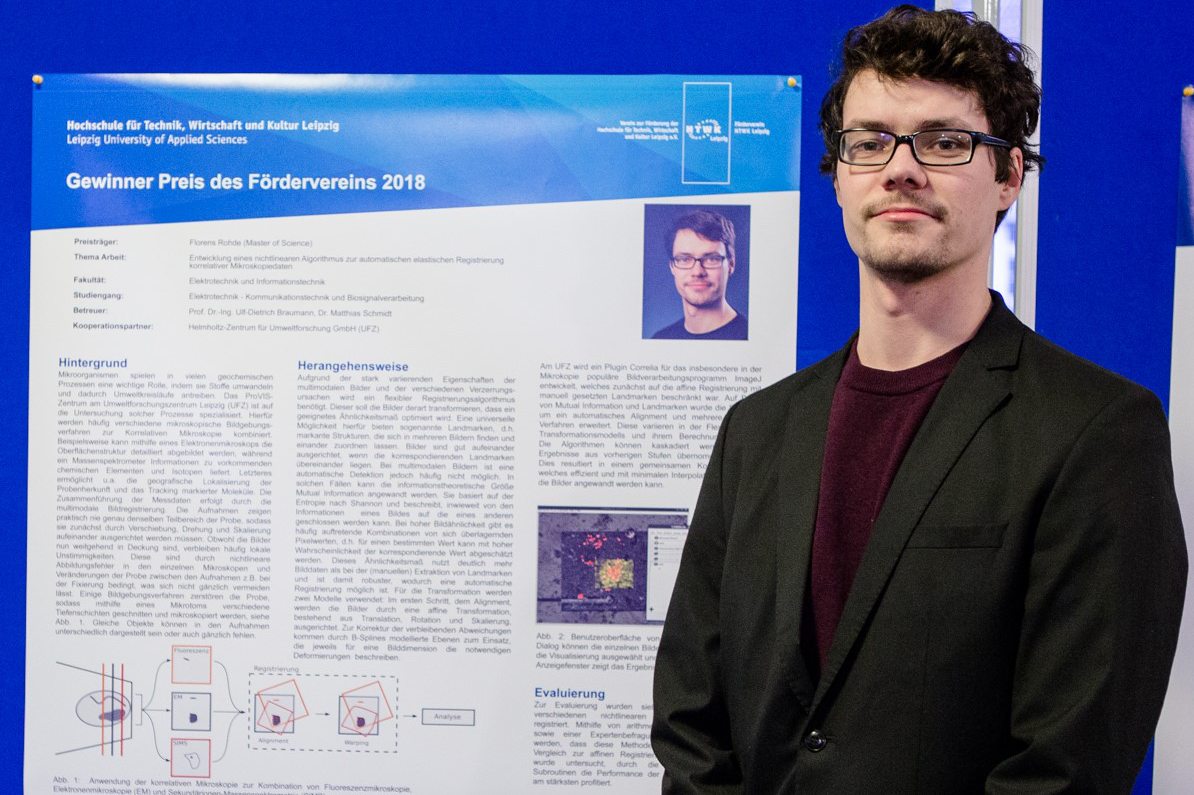HTWK graduate Florens Rohde developed "Correlia", a free research software for high-tech microscopy, as part of his electrical engineering degree programme

In their final theses, students show that they can apply the specialised knowledge they have acquired over the years to solve practical problems. And although there is a lot of passion in these theses, most of them are only read by a handful of people: the examiners. Florens Rohde is different: for his Master's thesis, he developed software for high-tech microscopy in cooperation with the Helmholtz Centre for Environmental Research (UFZ). On 23 January 2019, Rohde was awarded the prize of the HTWK Leipzig Sponsors' Association for his master's thesis. The UFZ published the resulting software at www.ufz.de/correlia, making it freely accessible and free of charge for everyone. Florens Rohde submitted the documentation of the software to the British "Journal of Microscopy" in April 2020. The article now appears in the October issue, with an image from it adorning the cover.
Correlia was developed to support researchers in analysing data in the field of correlative microscopy. Different microscopic modalities are applied to one and the same sample. For example, light-optical images of the anatomy of the samples in the living state, scanning electron microscopic images of the fine structure after fixation and drying and mass spectrometric images of the chemical composition from the imaging secondary ion mass spectrometer can be combined. This retrospective superimposition requires two things: Firstly, the varying image sections must be aligned with each other. On the other hand, both the modality-related non-linear imaging errors and the preparation-related distortions of the sample itself must be compensated for within the respective "region of interest" and thus images from completely different modalities must be aligned as precisely as possible ("image registration").
This topic was addressed by Florens Rohde as part of his master's thesis in the Electrical Engineering and Information Technology course at the HTWK Leipzig in the ProVIS Centre of the UFZ. His university supervisor was Ulf-Dietrich Braumann, Professor of Biotronic Systems at the Faculty of Engineering. At the ProVIS Centre, Florens Rohde was supervised by Dr Matthias Schmidt. Schmidt is a physicist responsible for electron and helium-ion scanning microscopy at the centre and has already developed software that can manage microscopic images based on the free image processing programme ImageJ and register them linearly using manually set landmarks.
The aim of the master's thesis was to add suitable algorithmic extensions for automatic and interactive-semiautomatic elastic registration as well as other image similarity measures such as transinformation (mutual information).
The result is Correlia, a plug-in for ImageJ/Fiji, which is available as open source software including sample datasets at www.ufz.de/correlia and is precisely tailored to the needs of modern correlative microscopy.
"The Correlia software is of great benefit because, unlike existing tools, it has no limitation on the number of microscopies to be superimposed, offers various visualisations for superimposition and the registration steps, i.e. the individual transformation processes, can be cascaded as desired and without loss. This allows users to combine automatic, semi-automatic and manual steps in order to achieve their goal with a high level of transparency and minimal effort," praises Prof Ulf-Dietrich Braumann.
At the beginning of April 2020, the manuscript "Correlia: an ImageJ plug-in to co-register and visualise multimodal correlative micrographs" by Rohde, Braumann and Schmidt was submitted as an original paper to the British "Journal of Microscopy". Following peer review by two anonymous reviewers and subsequent revision, the article has been available as an open access publication since 3 June 2020 at doi.org/10.1111/jmi.12928.
Florens Rohde is now a doctoral researcher at the Institute of Computer Science at Leipzig University.
Author: Dr Rebecca Schweier
